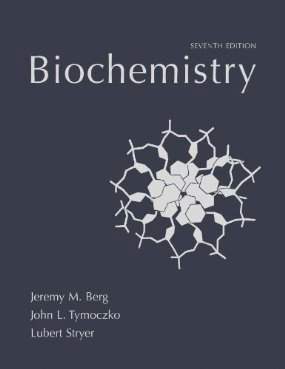Connecting...

For more information, please see full course syllabus of Biochemistry
Biochemistry ATP & Other High-Energy Compounds
One of the ways that reactions can be “coupled” to enable endergonic reactions to take place is via a mediator molecule called adenosine phosphate (ATP) that stores the leftover energy from exergonic reactions. This is how metabolism functions. The standard ΔG for the hydrolysis of ATP is large and negative, so it releases a lot of energy when needed. This is due to the presence of a lot of electrostatic repulsion in the molecule as well as hydrolysis products that are more stable (resonance forms and a more favorable equilibrium) than the starting material. However, ATP is kinetically stable, so an enzyme is required for quick hydrolysis due to a high activation energy. Similar compounds include phosphoenol pyruvate (PEP); 1,3 biphosphoglycerate; and phosphocreatine.
Share this knowledge with your friends!
Copy & Paste this embed code into your website’s HTML
Please ensure that your website editor is in text mode when you paste the code.(In Wordpress, the mode button is on the top right corner.)
- - Allow users to view the embedded video in full-size.










































 Answer Engine
Answer Engine




1 answer
Sat May 2, 2020 7:40 AM
Post by Nick Masse on April 30, 2020
Hey professor, if it is not the energy stored in the bonds of these compounds, what makes the molecule a high energy compound?
1 answer
Sat Sep 16, 2017 8:12 AM
Post by Swati Sharma on September 16, 2017
isn't negative 30.5 greater than negative 61.9 on the number line scale. So why do you keep saying that the latter is greater than the former when it s the other way around ?
1 answer
Fri Jan 13, 2017 7:26 PM
Post by Amer Reda on December 12, 2016
Hi, thanks for the amazing lecture. I have one question:
At 37:30 of the video, what's the difference between 1,3-biphospgoglycerate and 1,3-bisphosphoglycerate ?
1 answer
Sun Jul 3, 2016 7:56 PM
Post by Kaye Lim on June 16, 2016
-After being introduced to the coupling between endogenic and exogenic rxn, I kind of look at a random rxn between 2 reactants forming 2 products and asking myself if the reaction that I see is also coupled rxn as well in which to make deltaG of the rxn itself as a whole is thermodynamically favorable. My questions are:
-Is all or the majority of rxns in which deltaG is negative (not only biological rxns)are coupled rxn?
-If so, do I analyze the structure of reactants and the products to know which species went from high Energy to a lower Energy and which did the opposite to figure out if the rxn belongs to the coupled rxn theme?
-Does High Energy molecule have higher Energy stored in its bonds compared to low Energy molecule?
1 answer
Sun Jul 3, 2016 7:49 PM
Post by Kaye Lim on June 15, 2016
At 29:20, would you please explain again how Tautomerization drives the rxn forward?
So the major product form is the Keto form which drive the rxn into making more of the enol form which also ends up turning into the stable keto form?
-For high Energy molecules, what make them high in Energy if the Energy in the bond is not that high as you said? Also does high Energy molecules mean these molecules are unstable and more reactive?
1 answer
Fri Feb 20, 2015 10:05 PM
Post by bea v on February 18, 2015
Wow! The ATP explanation is excellent. Thank you.
1 answer
Sat Sep 20, 2014 7:57 PM
Post by shafaq ahmad on September 18, 2014
Hi,
Why ATP hydrolysis is exothermic but have high activation energy?